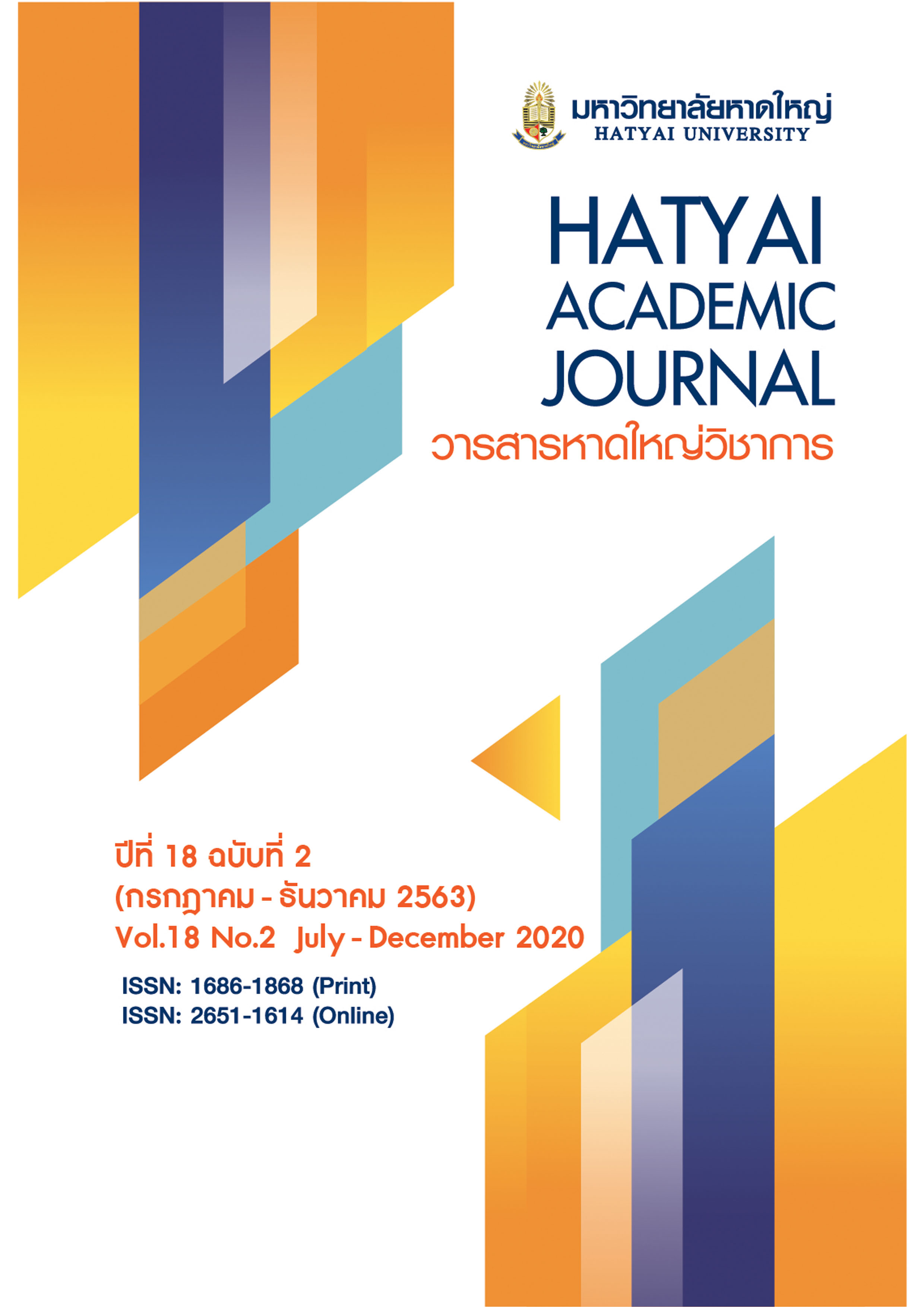Management Policy and the Shortage of Professional Nurses
Main Article Content
Abstract
The objectives of this research were to study the relationship between hospitality management policy and the shortage of professional nurses and to suggest solutions for the shortage. The researcher studied and collected secondary data from documents of various related agencies. The qualitative data also were obtained from four groups of key informants including (1) policymakers, (2) professional nurse producers, (3) hospital administrators, and (4) professional nurses, using a semi-structured interview.
The results of the study are as follows: (1) Policy-driven issues caused by the problem of coordination between relevant departments are various. (2) Conflicts in policy include canceling scholarships for nursing students that was launched while the demand for nurses increased, for instance. (3) In-depth information is lacking for the analysis of the demand for professional nurses. (4) There is a lack of professional progress and security restricts employment opportunities, causing overlapping work and affecting the welfare of personnel, monetarily and non-monetarily. The researchers suggest solutions to the problems as follows: (1) There should be a professional nursing development committee to be a center for coordinating cooperation between users, producers, stakeholders, and professional nurses. (2) There should be an establishment of clear and fair management policies and practical approaches especially regarding standard workloads, and the welfare of nurses, monetarily and non-monetarily, should be reviewed.
Article Details
All published articles are evaluated by three qualified peer reviewers from various institutions through a double-blind process, where reviewers do not know the authors’ identities and authors do not know the reviewers’ identities. The content and articles in the Hatyai Academic Journal reflect the authors’ views only and are neither the opinions of the editorial board nor the responsibility of Hatyai University. The Editorial Board of the Hatyai Academic Journal allows articles to be reproduced for academic purposes, on the condition that the original source is clearly cited.
References
Chindawattana, A. (2013). Creating public policy for participatory health: A new dimension of health promotion (5th ed.). Bangkok: Phim Dee. [in Thai]
Fujita, N., Zwi, A. B., Nagai, M., & Akashi, H. (2011). A comprehensive framework for human resources for health system development in fragile and post-conflict states. PLoS Medicine, 8(12), 1-7. Retrieved from https://bit.ly/3cCqvGc
Herzberg, F., Mausner, B., & Snyderman, B. B. (1959). The motivation to work. New York: John Wiley & Sons.
Jeungsathiensup, K., Wattananamkun, W., Phadungtot, C. H., Rattanamongkolkul S., & Sirisathitkun, M. (2015). Health reform, Democratic reform: Public policy, Participation and deliberative democracy. Bangkok: Deewan. [in Thai]
Kantha, A. (2014). Impact and solution of nursing labor shortage in Thailand. .Journal of Nursing Science, 32(1), 81-90. [in Thai]
Kaplan, R. S., & Norton, D. P. (2005). The balanced scorecard-measures that drive performance. Harvard Business Review, 83(7), 172-182.
Kingdon, J. W. (1995). Agendas, alternatives, and public policies (2nd ed.). New York: Harper Collins.
Kunaviktikul, W., Chitpakdee, B., Srisuphan, W., & Bossert, T. (2014). Preferred choice of work setting among nurses in Thailand: A discrete choice experiment. Nursing & Health Sciences, 17(1), 126-133.
Marć, M., Bartosiewicz, A., Burzyńska, J., Chmiel, Z., & Januszewicz, P. (2018). A nursing shortage-a prospect of global and local policies. International Nursing Review, 66(1), 9-16.
Nallaperuma, D., & De Silva, D. (2017). A participatory model for multi-document health information summarisation. Australasian Journal of Information Systems, 21, 1-15. Retrieved from https://doi.org/10.3127/ajis.v21i0.1393
Nopamornrabordi, M. /MGR Online. (2009). Crisis in nursing! Parade resigns every year 3 thousand people. New graduates flow to the private sector. Retrieved from https://mgronline.com/qol/detail/9520000005964 [in Thai]
Thailand Nursing and Midwifery Council. (2009). Second national nursing and midwifery development plan (2007-2016). Bangkok: Siriyod Printing. [in Thai]
Office of the Civil Service Commission (OCSC). (2017). Thai bureaucracy in the context of Thailand 4.0. Retrieved from https://bit.ly/39wxxu8 [in Thai]
Saikia, D. (2018). Nursing shortages in the rural public health sector of India. Journal of Population and Social Studies, 26(2), 101-118.
Sawangdee, K. (2008). The current nursing workforce situation in Thailand. Journal of Health System Research, 2(1), 40-46. [in Thai]
Sawangdee, K., Theerawanwiwat, D., Lorjirachunkun, W., & Jitrawech, J. (2009). Professional working schedule of professional nurses in Thailand. Journal of Demography, 1(1), 73-93. [in Thai]
Srisuphan, W., & Sawangdee, K. (2012). Policy recommendations for solving the shortage of professional nurses in Thailand. Journal of the Nursing Council, 27(1), 5-12. [in Thai]
The Secretariat of The House of Representatives. (2014). Reform issues of Thailand in local administration. Bangkok: The Secretariat of The House of Representatives. [in Thai]
Watthanasiritham, P., & Petchmak, P. (2008). Social administration science of the century for Thai and world society. Bangkok: Community Organization Development Institute. [in Thai]
Wongwichai, C. H. (2016). Health manpower as labor: Problems and solutions of the Thai health system. Retrieved from https://www.hfocus.org/content/2016/04/12004#_ftn4 [in Thai]
Yin, R. (1994). Case study research: Design and methods (2nd ed.). Beverly Hills, CA: Sage.

